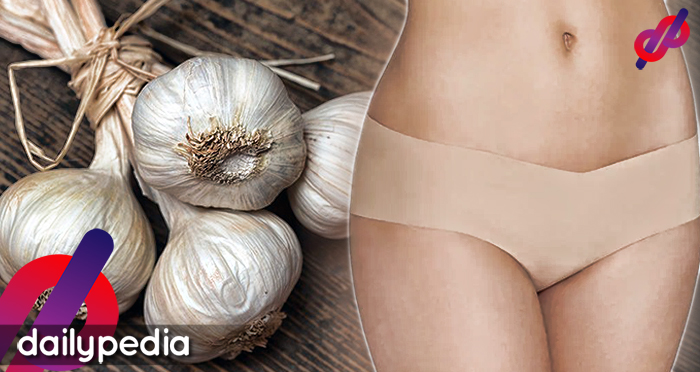- Some women tried putting garlic inside their vaginas to cure vaginal yeast infections
- Before allicin to be released in garlic, it needs to be cut or crushed
- Gunter adviced women to not take medical advice and use garlic for vaginal yeast infections
Some people would first try home remedies searched on the Internet before consulting a specialist, then do self-treatment to prove whether it’s true or a bluff.

Apparently, some women tried putting garlic inside their vaginas to cure vaginal yeast infection, a fungal infection that causes irritation, discharge, and intense itchiness of the vagina and the vulva — the tissues at the vaginal opening.
Dr. Jennifer Gunter, the New York Times’ gynecologist, shared on her Twitter account her opinion about the putting of garlic by some women in their vagina. On her thread, she explained several reasons why garlic should not be put inside the vagina.
She explained that garlic contains anti-fungal properties called allicin, but this is in the lab as she emphasized.
Why you should not put garlic in your vagina.
A thread.
Garlic contains allicin, in THE LAB it MAY have antifungal (i.e. anti yeast) properties. This is in a lab, not even in mice. Just a dish of cells. Your vagina is not a dish of cells. #vaginaisanogarliczone 1/8— Jennifer Gunter (@DrJenGunter) April 23, 2019
Gunter’s called these “vaginal garlic aficionados” who advocates putting cloves of garlic inside their vagina clearly doesn’t know that before allicin to be released, it needs to be cut or crushed.
Lots of vaginal garlic aficionados (I SHOULDN'T HAVE TO TWEET THAT IN 2019, BUT HERE WE ARE) recommend inserting a clove. This means they don't understand for allicin to be released the garlic has to be cut or crushed. Sigh. #vaginaisanogarliczone 2/8
— Jennifer Gunter (@DrJenGunter) April 23, 2019
The doctor was also concerned with the bacteria from the soil where garlic is grown. That there were possibilities those bacteria would cause further more infections that is harmful to the body.
Garlic could have bacteria from the soil. Bacteria from the soil can be pathogenic — bad for the body. That's why we clean wounds. If you actually happen to have an inflamed yeasty vagina that soil bacteria would be more likely to infect #vaginaisanogarliczone 3/8
— Jennifer Gunter (@DrJenGunter) April 23, 2019
Another concern is something about “biofilms” which Live Science defines as “a collective of one or more types of micro-organisms that can grow on many different surfaces.”
Garlic can cause biofilms on braces, so could garlic contribute to biofilms in the vagina? Biologically plausible. Biofilms are bad. You do not want them to form especially when you have yeast. Effect of garlic good bacteria also unknown #vaginaisanogarliczone 5/8
— Jennifer Gunter (@DrJenGunter) April 23, 2019
On her thread, she said that 50-70% of women are doing self-treatment for vaginal yeast and never actually had a yeast infection but only irritation which is a temporary thing.
As 50-70% of women who self treat for vaginal yeast never actually had a yeast infection you can't say much, except half of them never had yeast to begin with so the irritation they had may have been a temporary thing and resolving wasn't garlic related #vaginaisanogarliczone 6/8
— Jennifer Gunter (@DrJenGunter) April 23, 2019
And Gunter even urged women to not take medical advice and use garlic for vaginal yeast infections.
My advice, do not take medical advice from anyone recommending vaginal garlic for yeast or anything else. If you enjoyed this thread, you will like my book The Vagina Bible (August 27) #vaginaisanogarliczone https://t.co/G3azTcxTaI 8/8
— Jennifer Gunter (@DrJenGunter) April 23, 2019



